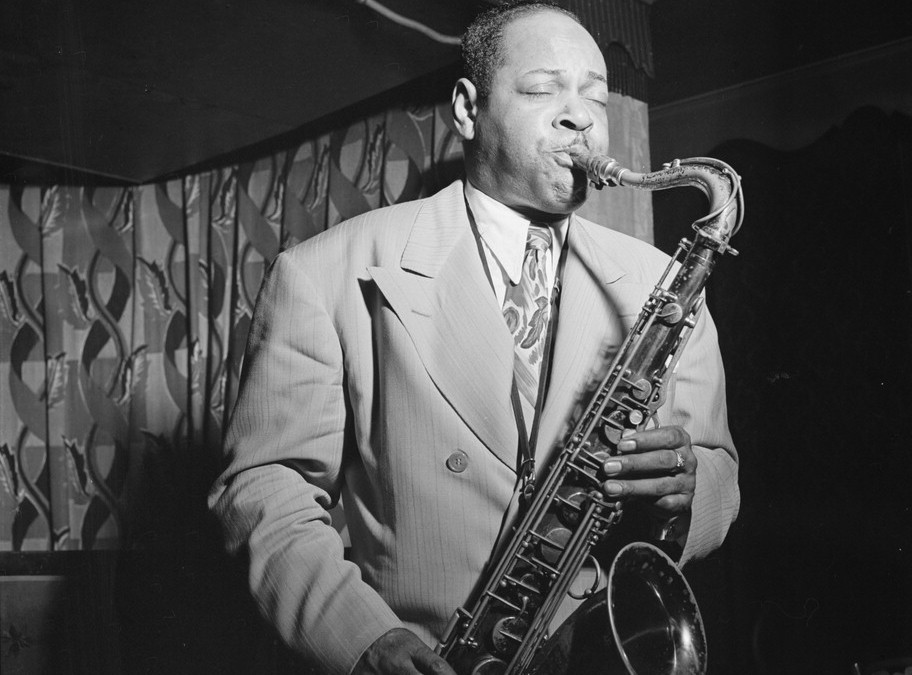by Dr. Vincent Patterson
When you have the opportunity to “Talk Jazz” no doubt you’ll want to refer to the first great tenor saxophonist, Coleman Hawkins. In a recent WSJ article, Will Friedwald points out the Hawk’s many claims to this fame. Here’s a few excerpts to build up your jazz-savvy bag: “At the time Hawkins made his first recording, age 16 in 1921, there was no role model for him on the instrument. Yet by the time he recorded his landmark solo on ‘Body and Soul’ 17 years later, Hawkins had altered the landscape of jazz and American vernacular music. He had almost single-handedly transformed the sax…into the very symbol of jazz itself. Finding that playing variations on a song’s melody could get you only so far, he also improvised on the chord changes. With harmonic progression as his starting point, Hawkins showed how he could extend an improvisation almost indefinitely. Not only were all saxophonists in his debt, but so were Art Tatum, Django Reinhardt and nearly every musician of 1940’s and ‘50’s. Not until the ‘60’s did jazzmen begin to look beyond chord changes for inspiration.” Now we have the evidence – in one box – we need to investigate and enjoy The Hawk’s tuneful genius. The set is produced by Mosaic Records: “Classic Coleman Hawkins Sessions 1922-1947.” Annotations are by New York studio saxman Loren Schoenberg. For more details read on. “…the first comprehensive document of Hawkins’ musical development. Starting with his first solo, on the 1922 “I’m Gonna Get You,” which he played in support of the pioneering blues singer Mamie Smith. The package covers a 25-year period and is essentially a two-act story, with 95 tracks in each half. The first half covers…ascendance…his long collaboration with Fletcher Henderson. The second half…mastery from 1939 to… end of the 78rpm era 1947…17 tracks from the 1920’s, the earliest of which reveal the tenorist (who recently switched from cello) using slap-tongue effects popularized by…Rudy Wiedoft. …on “If I Could Be With You” Hawkins points to whole new vistas for all of jazz…The ideal of the jazz ballad begins with this track. Hawkins’ playing, inspired partly by the singing of Louis Armstrong…is rapturously romantic. There’s at least a touch of blues in his ballad work, which helps ensure evrything is more sensual than sentimental. The 1940’s sessions are a highly rewarding hodgepodge material…partly from Columbia and RCA vaults…w/ Nat King Cole, Count Basie and Sinatra. Hawkins is especially compelling on a rare 1943 version of “Lover Come Back To Me.” Hawkins’ playing in the war years is nothing short of magisterial, as it would be on many of his LPs almost up to the time of his death in 1969.” Friedman closes by quoting jazzman Benny Carter, “I don’t think he copied anybody, he was a creator. He led.” The author rightly credits Hawkins who set the bar himself and whom no one has beat in the subsequent 90 years. Check it our folks, you’ll be swinging down the street, Body and Soul. Happy listening!!

